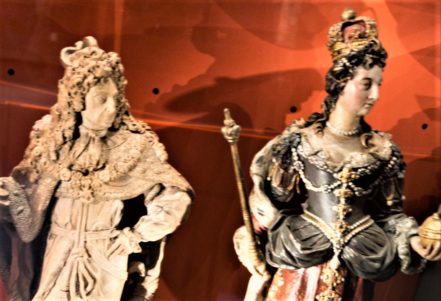
The Glorious Revolution
“And whereas it hath been found by experience that it is inconsistent with the safety and welfare of this Protestant kingdom to be governed by a popish prince, &c….” ~ Such had been the terrible wrangles between Protestants and Catholics that this “experience” eventually resulted in the Declaration of Rights of 1689 banning Catholics from ever ruling again. This was one result of the Glorious Revolution of 1688-89, which saw a Catholic king removed and Parliamentary power established.
The ‘glorious’ revolution involved no immediate battles. Indeed, seven noblemen sent an invitation to the prospective joint monarchs, Dutchman William of Orange (1650-1702), nephew of the deposed Catholic James II & VII (1633-1701), and William’s wife Mary (1662-94), who happened to beJames’s eldest daughter and heir until the dreaded birth of James’s Catholic son to his second wife in 1688. Amidst Protestant uproar James fled to France and his Catholic allies.
William III and Mary II willingly agreed to the Declaration which eliminated the possibility of any return of tyrannical rule by monarchy. Parliament now had the power of law-making, the raising of fair taxes, free elections and freedom of speech, and sadistic punishment of offenders was banned. It was the first step to our present constitutional monarchy.
(Image of William & Mary figurines in the V&A: Thomas Quine at Flickr.com / CC BY 2.0)
